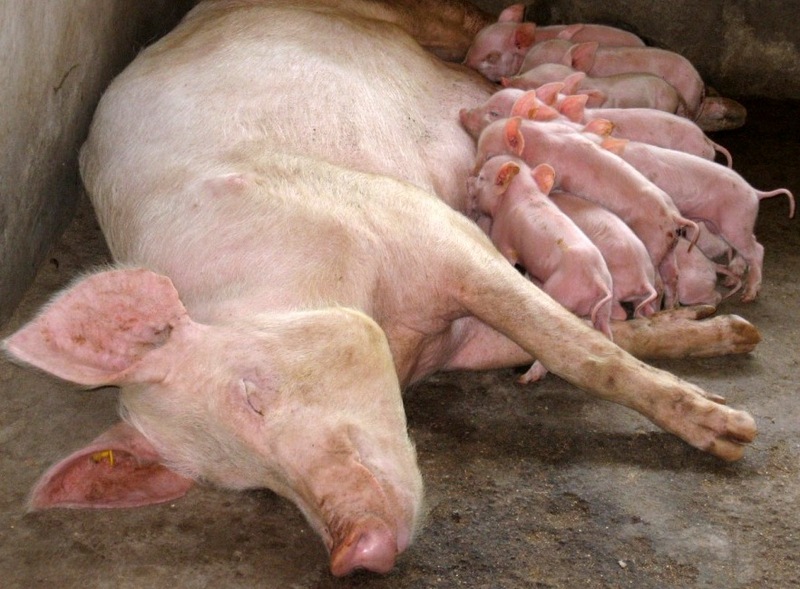Farmers can increase their income from pigs by 34 per cent through proper management of piglets on their farms.
According to research conducted by the Kenya Agricultural and Livestock Research Organization, a sow (female pig) has the ability to give birth to 12 piglets but only eight survive to maturity due to factors such as cold and suffocation by the mother pig among others.
At birth, disinfecting the umbilical cord with iodine five per cent to prevent disease infection. Piglets are affected by cold in the first two to three weeks after birth due to insufficient fat layers on their bodies to protect them. To keep them warm, provide bedding (grass or wood cravings) or artificial heating such as infrared bulbs.
Clip the piglet’s teeth within 24 hours to avoid damage to the sow’s udder when suckling. On the third day inject the piglets with iron to reduce incidences of anemia attack.

Piglets suckling
Death by suffocation is caused when the sow lies on the piglets. This can be reduced by building a creep area for the piglets where they can move slowly without interference. Tag the piglets’ ears for easy identification and record keeping.
Related content
Pig association assist farmers double pork prices
How two pigs can give you close to Sh1 million in one Year
How to control deadly pig disease
At week eight when the pigs weigh 20kg, separate them from the sow by weaning (withdrawing the supply of mother’s milk). The pigs can then be put in a group of 10 to 12 depending on their weights.
The small pigs are kept away from the big ones to reduce fighting. Only piglets from one sow are mixed together to reduce weight loss and stress.
When mixing piglets from different sows apply used engine oil on their skin to get rid of the identification scent.
Pigs are reared for their meat (pork) while their skin is used to make leather and their hairs (fur) are used to make brushes.
According to the 2018 Economic Survey Report, the number of pigs slaughtered increased for the third consecutive year, to 360,100 in 2017 up from 313,600 in 2016.